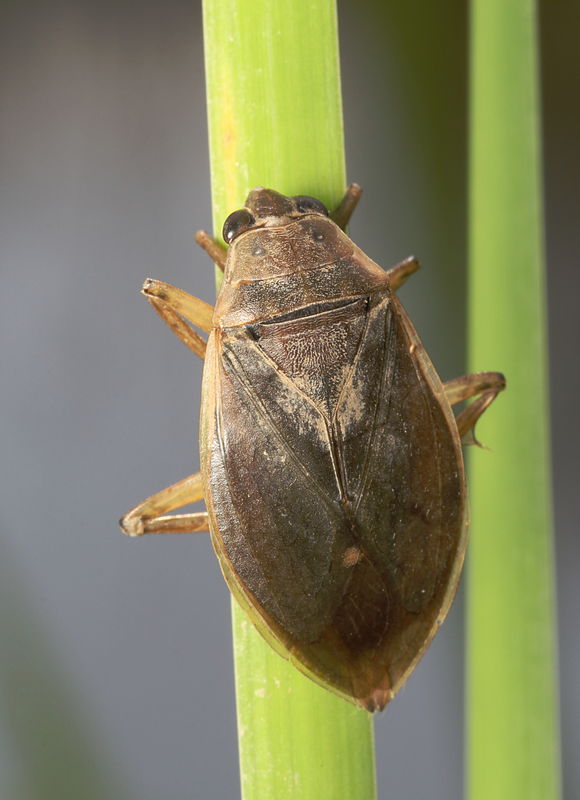Check out Astronomical Photography Forum section of our forum.
What is it? And a few other items.
Mar 30, 2018 14:02:05 #
I know what the first bug is, but it is not in its usual context and maybe it is harder to recognize from the side. Anyway, be the first to identify it to family and genus and you will ‘win’. There is no physical prize, but there will be a slight sense of pride and satisfaction.
The odd looking black and yellow wasp in the next picture was completely new to me. It turns out to be Nysson plagiatus, and it has a rather interesting biology in that it is a kleptoparasite. Specifically, it lays its eggs in the provisioned burrows of related wasps like golden digger wasps plus a few other species. The larva then eats the food provided by the first wasp, which are generally paralyzed katydids.
The next picture is of another black wasp on pure white flowers (difficult! Probably could have done better). This is the one-spotted spider wasp, Episyron biguttatus, which will provision its burrow with paralyzed spiders.
Speaking of spiders, the last picture is of a banded argiope garden spider (Argiope trifasciata). I grew up calling them silver argiopes, but that name is given to a different species, apparently. In any case they are fairly common around here.
The odd looking black and yellow wasp in the next picture was completely new to me. It turns out to be Nysson plagiatus, and it has a rather interesting biology in that it is a kleptoparasite. Specifically, it lays its eggs in the provisioned burrows of related wasps like golden digger wasps plus a few other species. The larva then eats the food provided by the first wasp, which are generally paralyzed katydids.
The next picture is of another black wasp on pure white flowers (difficult! Probably could have done better). This is the one-spotted spider wasp, Episyron biguttatus, which will provision its burrow with paralyzed spiders.
Speaking of spiders, the last picture is of a banded argiope garden spider (Argiope trifasciata). I grew up calling them silver argiopes, but that name is given to a different species, apparently. In any case they are fairly common around here.
What is it??
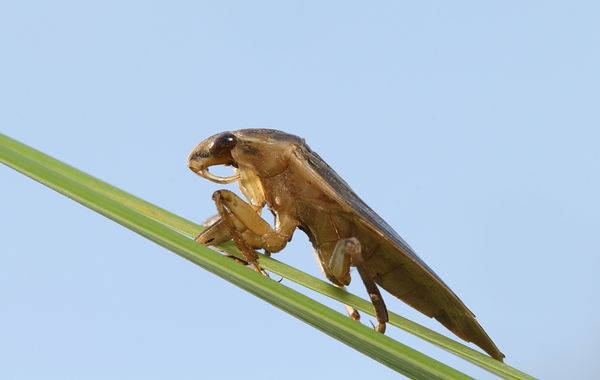
(Download)
Kleptoparasitic wasp
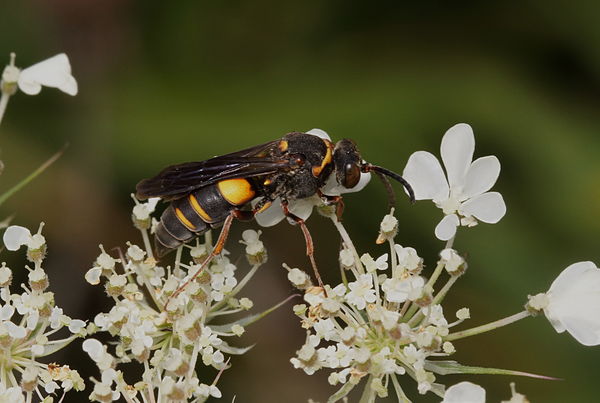
(Download)
Spider wasp
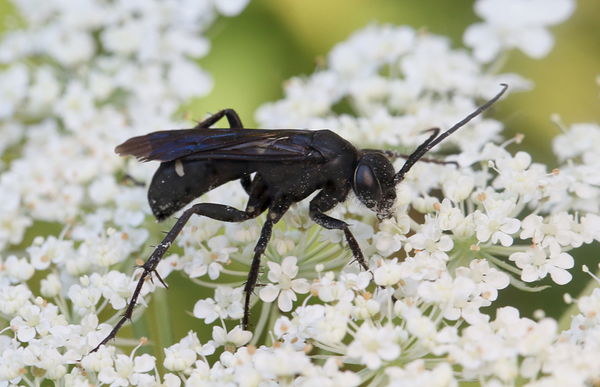
(Download)
Banded argiope
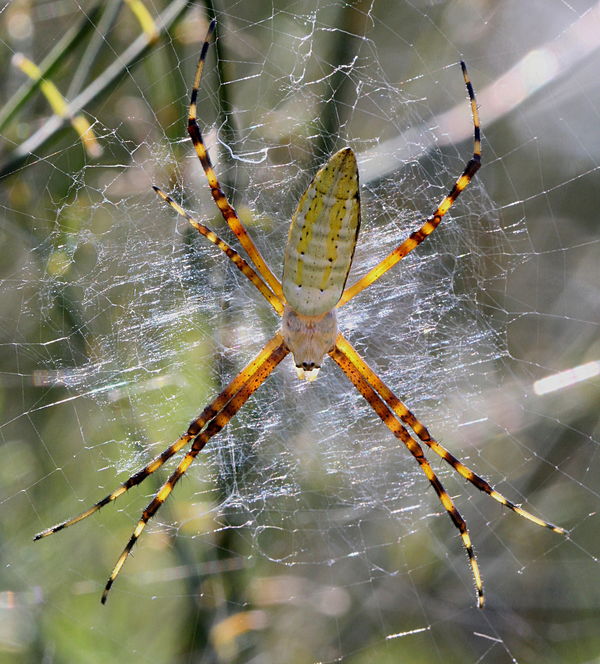
(Download)
Mar 30, 2018 14:35:05 #
Mar 30, 2018 15:05:12 #
Mar 30, 2018 15:09:54 #
Mar 30, 2018 16:29:23 #
Mar 30, 2018 17:37:02 #
I have only just seen it but I am thinking along the lines of Ambush or Assassin bug. I will look further.
Mar 30, 2018 18:11:10 #
Check out Printers and Color Printing Forum section of our forum.
Mar 30, 2018 18:18:31 #
EnglishBrenda wrote:
Reduviidae sp.? Perhaps sinea ?
The order is correct (Hemiptera). 👍 It is also predatory.
Now a hint is that sitting out in the open air like this is not its usual habitat.
Mar 30, 2018 19:19:22 #
Mar 30, 2018 19:24:15 #
Mar 30, 2018 20:24:38 #
tinusbum wrote:
water scorpion
You are getting warmer... Not quite the right family.
Check out Travel Photography - Tips and More section of our forum.
Mar 31, 2018 05:02:24 #
Mar 31, 2018 06:36:09 #
rhadams824
Loc: Arkansas
Mark Sturtevant wrote:
You are getting warmer... Not quite the right family.
My guess would be a giant water bug, Family Belostomatidae.
Mar 31, 2018 09:51:19 #
Mark Sturtevant wrote:
I know what the first bug is, but it is not in its... (show quote)
Good bug shots....Rich
Mar 31, 2018 10:47:54 #
rhadams824 wrote:
My guess would be a giant water bug, Family Belostomatidae.
rhadams824 has it to family, and let's call it. Good work everybody! It is not the giant giant water bug, but more like the 1" long sort, genus Belostoma. Sometimes they venture out of the water and hang out. Here is another picture of this one. I expect that if you saw it from this angle it would have been tracked down pretty quickly.
If you want to reply, then register here. Registration is free and your account is created instantly, so you can post right away.
Check out Infrared Photography section of our forum.







